‘I will give you the crown of life’ (1920)

Few places in Britain were not affected by the appalling loss of life brought about by the First World War (1914-18). New Malden was no exception sending numerous young men to fight on the Western Front, many of whom were killed or horrifically injured. Christopher Challacombe, the son of the second Vicar of Christ Church, survived his service in France but with terrible shell shock. Two marble tablets remember individuals who died in the war. One in the south wall remembers Captain Stanley Frank Ayres, 7th Battalion, East Surrey Regiment, who was killed, aged 30, at Cambrai on 20th November 1917.
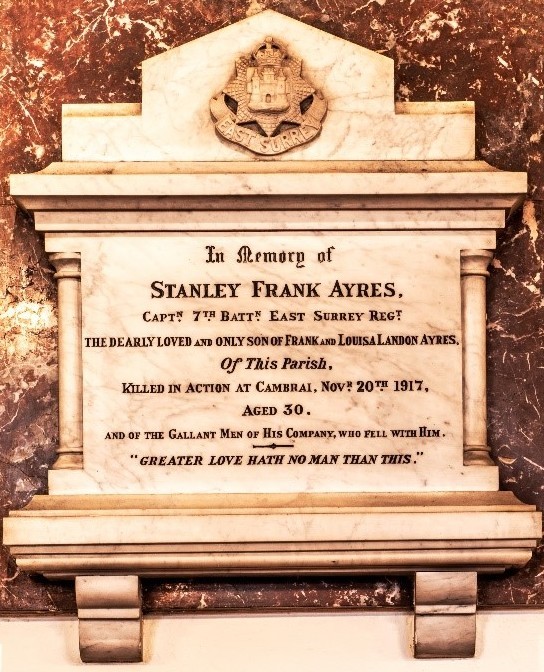
The other in the south wall of the chancel remembers 2nd Lieutenant Humphrey Morris Swift, 2nd Battalion, The Welsh Regiment, who was killed, aged 24 at Passchendale on 16th November 1917.
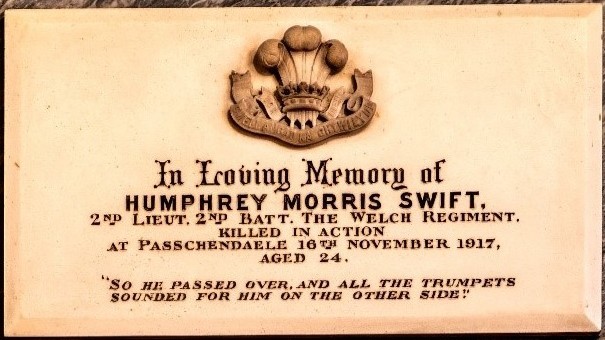
In January 1920 the decision was taken at Christ Church to place an Oak Screen and Names Tablet at the front of the chancel in memory of those of the Parish whose lives were lost during the Great War.
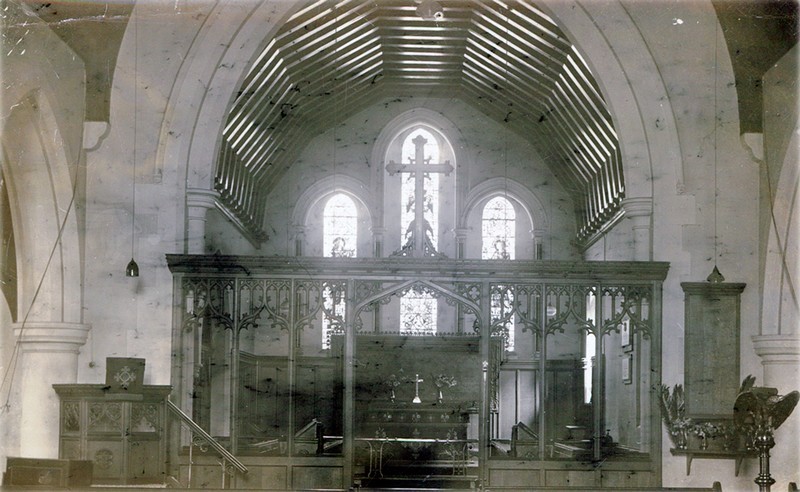
The establishment of such a screen at Christ Church was surprising but reflects the widespread inadequacy felt by evangelical Christianity at how to respond to the slaughter and the way that increased ritual and ceremony met this need.
It was in November 1924 that the war memorial was established in New Malden High Street with its dedication led by the third Vicar of Christ Church, Alvin Birkett (1921-35).
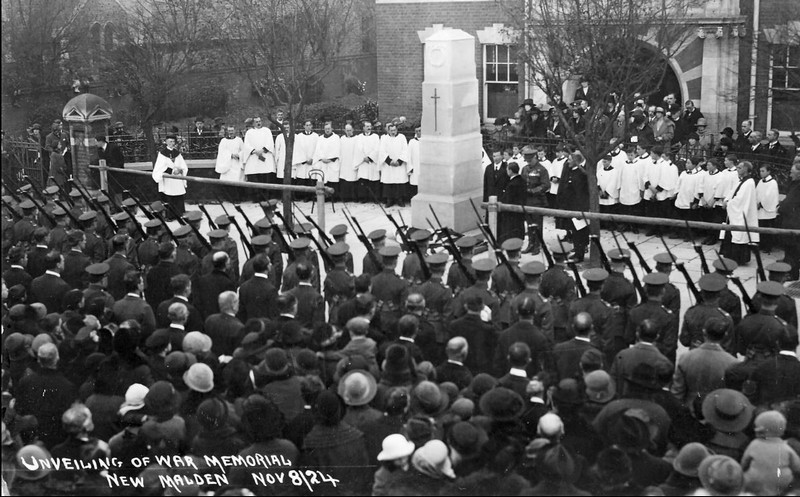
One of those remembered on both the names tablet at Christ Church and the war memorial is Captain Rashell Montague Rashell Davison. Monty, as he was known, was born on 31st May 1886 in Battle, East Sussex. He was the youngest of six children born to Dr Rashell Thomas Davison and his wife Frances. In 1891 the family were living in Battle High Street with Dr Davison established there as a medical practitioner. As well as three maids and a cook, a governess was employed to look after Cecilia (11), Anthony (9), John and Kathleen (both 8), Kaye (6) and Monty (4). A medical student called John Bailey was also lived with them.
By 1901, the family had moved to Vernham, 2 Kingston Road in New Malden near the Fountain. Mary Morton, a 68 year old woman, boarded with the family and they also employed a cook and a housemaid. Monty’s elder brother, Anthony, had been educated at Epsom College Upper School between 1894 and 1898 and on 27th April 1901 Monty entered the Upper IV form of the school, joining his brother Kaye.
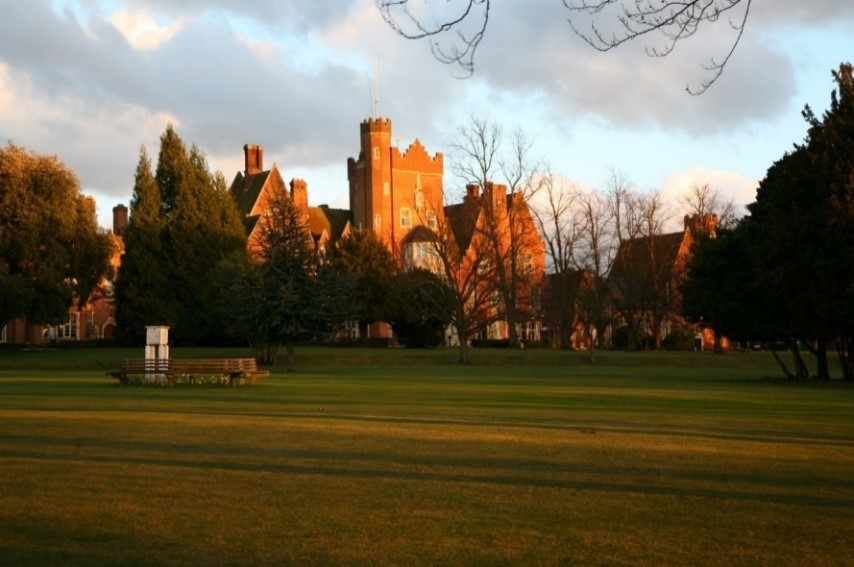
Original photo of Epsom College taken by Naveed Barakzai/Maxal Photography, and licenced to Wikipedia under CC BY-SA 2.5
Monty was successful coming top of his form in 1901, passing his School Certificate with two first class passes in Maths and Latin in 1902 and the Higher Certificate in 1903. In 1905, although he came fourth out of the four boys in the Sixth Form, he took the form prize and had two pieces of work shown to the Headmaster. He was also awarded the prize for English literature.
After leaving school in Easter 1905, Monty became the Far Eastern agent for Spicer and Co. living in India. His parents and siblings continued to live in New Malden. In 1910 Monty travelled from Isfahan in Iran to the Gulf port of Mohammorah, a journey of three weeks by mule caravan. He wrote to Epsom College to say that the strangeness of the surroundings did not detract from the pleasure with which he read all the news in the college magazine. In January 1911 he was in Karachi.
It was a year into the war that Monty embarked from Colombo, Ceylon, on the ship Gloucestershire, to return home. He arrived back at Tilbury on 4th May 1915. Lord Kitchener’s famous recruitment campaign was in full swing and it was perhaps as a result of this that Monty had returned and enlisted in the Inns of Court Officer Training Corps on 28th June 1915.
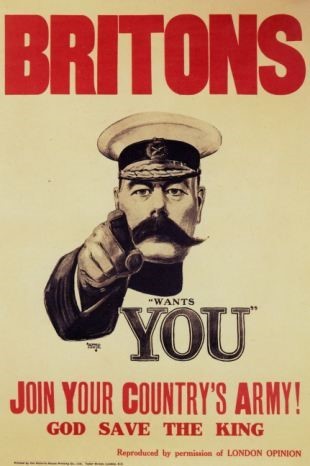
The details taken record that Monty was 5 feet 7 inches tall with 33 ½ inch chest and a 3 inch expansion, a good physical development and 6/6 vision! He served as Private 4493 until 6th October 1915 when he was discharged to a commission in the 3rd North Staffordshire Regiment.
Monty was sent to France on 5th July 1916 where he was attached to the 8th Battalion of the Leicestershire Regiment, following which he was involved in numerous engagements.
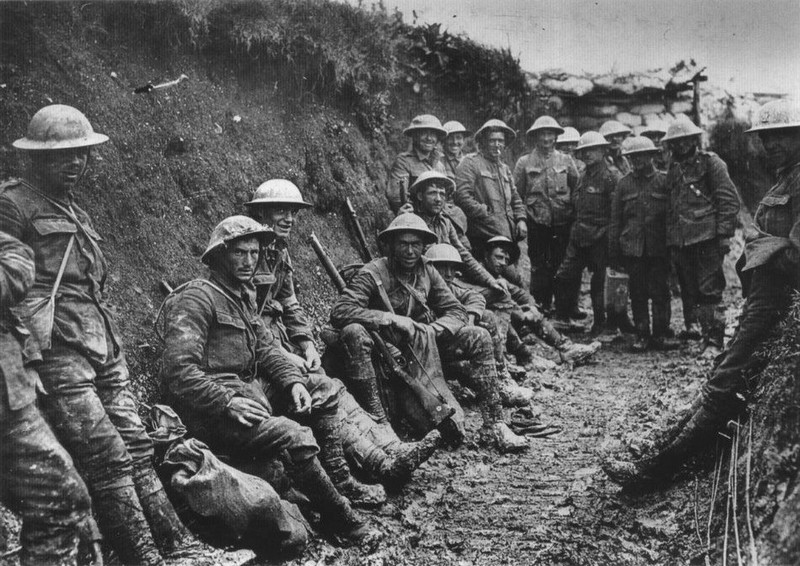
Soldiers of the Royal Irish Rifles at the Somme in 1916
(Public domain photo from the collections of the Imperial War Museums, collection no. 1900-02)
On 21st March 1918, the German forces on the Western Front launched a massive attack. Planned by their new general, Ludendorff, Operation Michael was designed to exploit the Germans’ last chance to gain victory in the war before the resources of the USA could be fully deployed.
The Spring Offensive marked the deepest breakthrough made by either side since the beginning of the war. Monty was involved in fighting the German advance at Epehy. The stand that the 110th Brigade (comprising the 6th, 7th, 8th and 9th Battalions of the Leicestershire Regiment) took at Epehy has been described as heroic in slowing the German advance, which by late April had lost momentum.
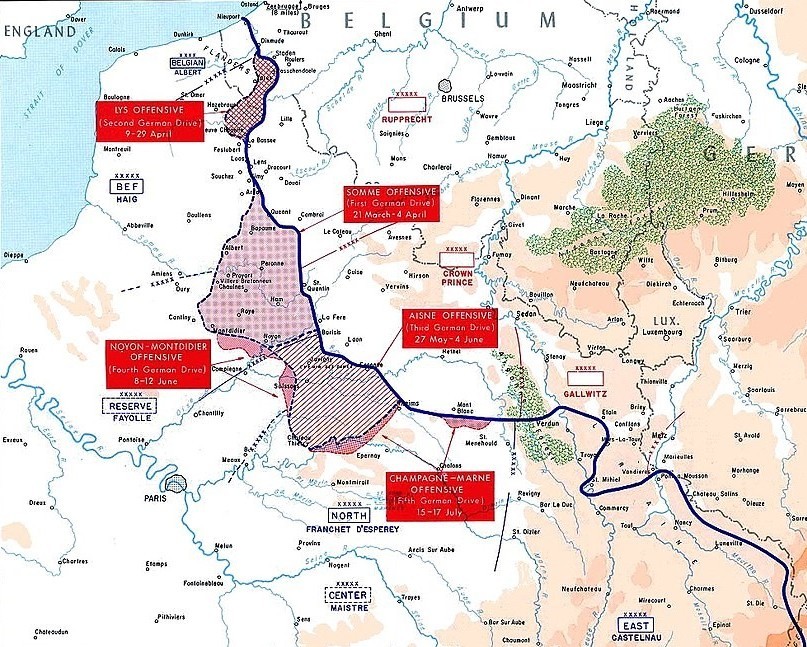
However during the fierce fighting on 22nd March, just a day into the German offensive, Monty was shot through the forehead and taken prisoner. A series of telegrams informed his parents, still living in New Malden, that he was wounded and missing. On 18th April, they received a letter informing them that Monty had become a Prisoner of War but that the War Office did not know at which camp he was being held.
Monty eventually managed to get a message to his parents that he was in Karlsruhe and that his wound had caused paralysis in his right arm and caused him to lose his voice, although this was improving. He also had six wounds to his legs. His father wrote to the War Office to inform them. In August, he was informed that Monty had been transferred from Karlsruhe to Landshut and that he also had a wound at the back of his cheek.
By that stage, the German war effort was nearing collapse, resulting in the armistice in November 1918. It was following this that Monty was repatriated and admitted to the Prince of Wales Hospital for Officers in Marylebone as he was still partially paralysed from the waist down. He was operated on but complications arose and Monty died of pneumonia and post-operative cerebral meningitis at 5.30 pm on 27th January 1919. He was 32 years old. Monty’s father, Dr Thomas Davison wrote to the War Office stating that it was his ‘solace and pride that his boy had died true to his lineage’.
Monty’s funeral took place at Christ Church on Friday 31st January 1919 and was conducted by the Reverend William Allen Challacombe. He was then buried at Kingston Cemetery.
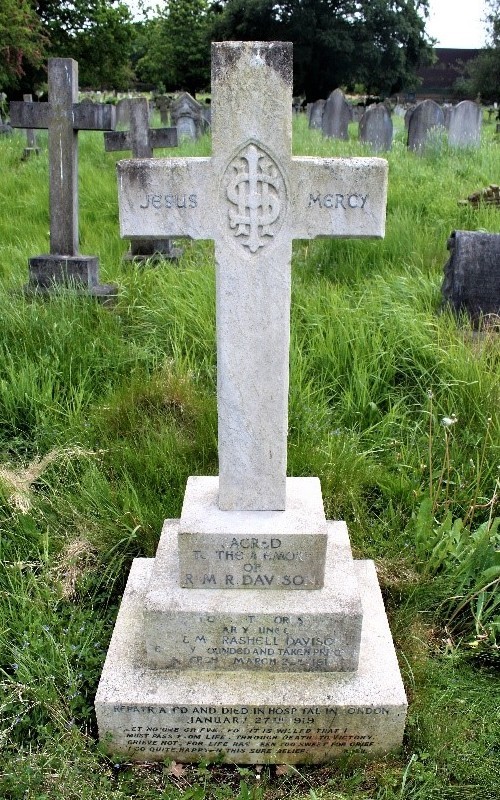
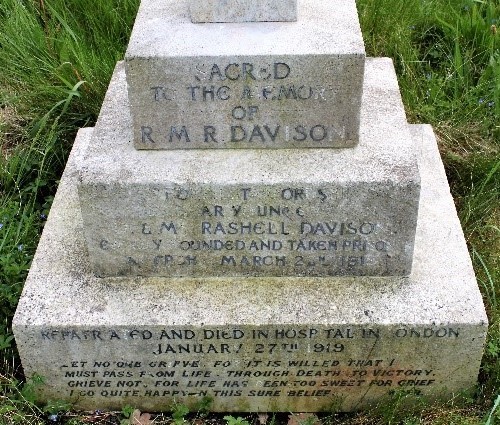
It was after Monty’s death, that a friend of his gave Dr Davison a poem that Monty had written the night before going into action at Epehy. Monty had a premonition that his greatest friend and brother officer would not come back from the engagement and that he himself would only come back for a short while. He left instruction that the poem was not to be given to his family until after his death.
Vale: A Soldier’s Farewell
By Captain Rashell Montague Rashell Davison
So I lay dying – while the hours of Life
Slowly welled forth, staining the shattered ground;
The poor shell-shattered ground, victim of strife
Which rocked and crashed and shrieked and echoed around.
Dim velvet shadows veiled my aching head
and in a few short hours I should be dead.
Dead! Yet to me Life gave with both her hands.
Joyous I stayed down paths with pleasure strewn:
Laughed lightly, lightly loved in many lands,
And reaped in fields which fairy hands had sown;
Drinking deep draughts of joy that had no end.
And once, at any rate, I found a Friend!
A Friend! Ah! Yes, I too have plumbed the deep
Of Friendship’s passioned moments, calmer hours
I have snatched happiness from gentle sleep
Culled the sweet blooms of Night’s exotic flow’rs;
Won too great joy – a joy that stifled breath –
And lost it in a moment to chill death!
E’en as I lie, I see the Bridge of Fate,
Linking me to the Future of the Past,
And, as I strain my dimming eyes, the Gate
Of Life-through-Death flings open wide at last.
There limned in colours that may never fade
Are all the reassures of my mind portrayed.
The poor grey battered bastions which remain
Of all the glory Ypres gave to mankind,
The sacrifice of Him-without-a-stain
Which faithful souls at countless crossroads find
A narrow road-strip leading to the sea –
All these are living memories for me.
Orion leaning down to greet the moon,
As daily round the outpost line I go,
His golden belt fading fast while, forlorn –
He vainly strives to meet the new Sun’s glow –
The pale French grey of dawn and mist and sky
As Flanders’ battle days go grimly by.
Street scenes in Arras – ‘Eppy’s’ coat of snow,
A red cross ambulance at eventide
Speaking to weary wounded of the slow
And comfortable homeward motor-ride,
Glories of old gold on the puddle way,
Sun flashes of a washed-out winters’s day.
Dear memories that live, though I must die!
Mind paintings that are still a part of me!
Let no one grieve – for it is willed that I
Must pass from Life to Death to Victory.
Grieve not – for life has been too sweet for Grief.
I go quite happy in this sure Belief.
Dr Davison had the poem published in the Surrey Comet on Saturday 8th February 1919. The last part of the poem was reproduced on Monty’s grave.

Rashell Montague Rashell Davison’s name can be found on the memorial tablet at Christ Church. Following the reordering of the interior of Christ Church 2007, the tablet was moved to the south wall.
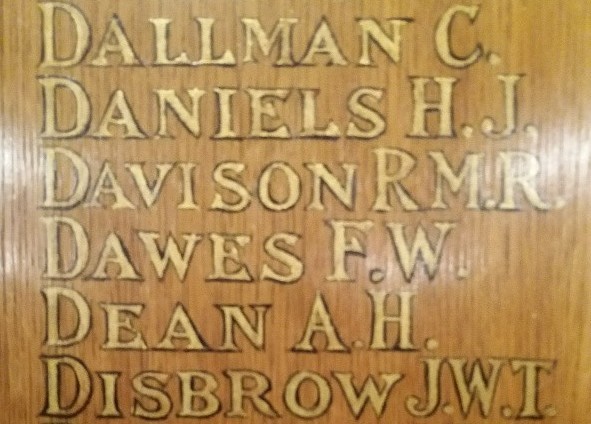
Monty is also remembered on the War Memorial at Epsom College and the one established in 1924 in New Malden High Street.
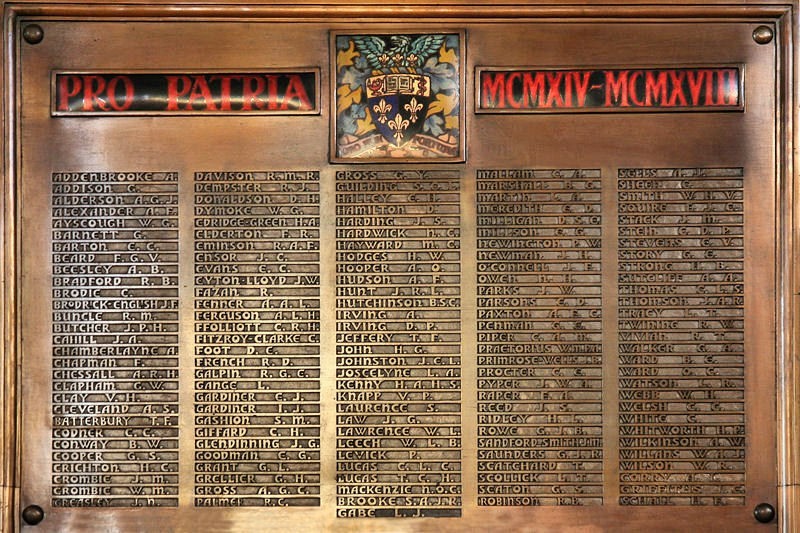
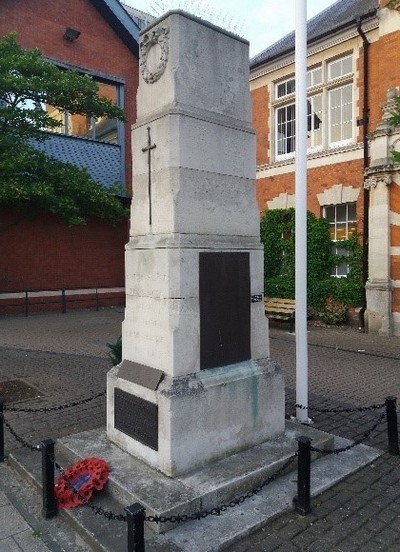
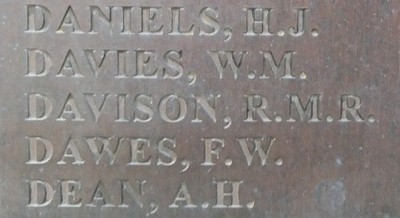
It was in 1920 that a stained glass window was established at Christ Church to remember Monty Davison. As well as bearing the insignia of his regiment, the window portrayed a fallen warrior receiving the crown of life (Revelation 2.10).
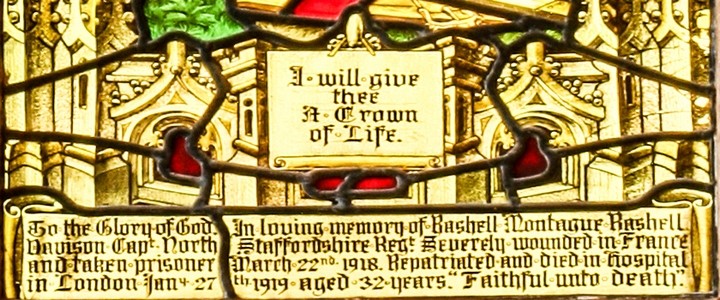
The window was originally in the north wall but when the Christ Church Centre was built in 1981, it was transferred to a lit box in the south wall.
Monty’s father Rashell Thomas Davison died in 1936 at the age of 83. Before that, his wife Frances had died in 1927 at the age of 79 and in 1929, Thomas lost another of her sons when Anthony died at 47. Kathleen died in 1945 aged 61 and John in 1948 aged 64. All of them are buried with Monty at Kingston Cemetery.
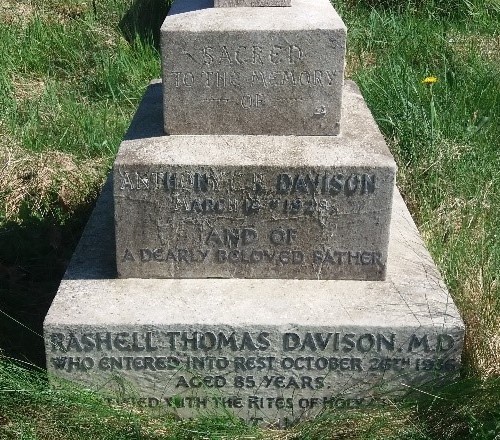
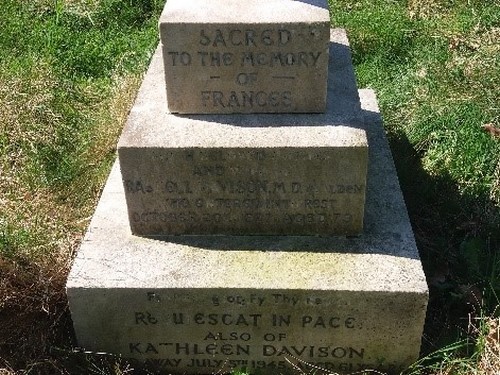
You can listen to the sermon from the Windows on the Gospel sermon series below.
| Simeon and Anna (1912) | Jesus with Mary and Martha (1965) |
